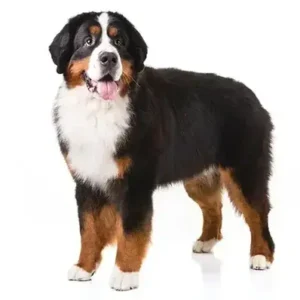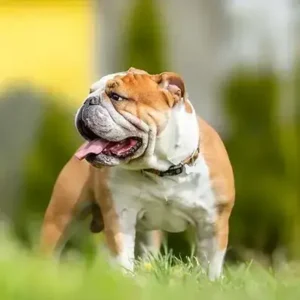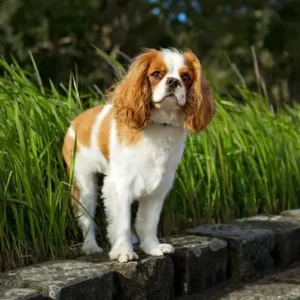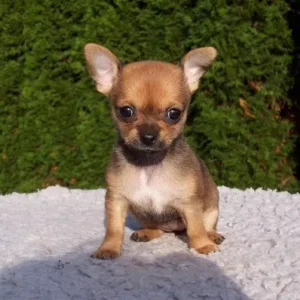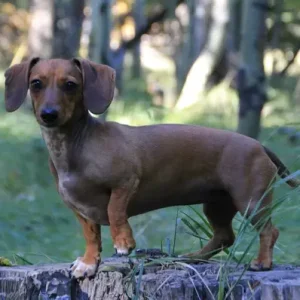Borzoi History/Origin
The Borzoi, formerly known as the Russian Wolfhound, has a history that dates back to 1650 when Russia established the breed’s first standard. Bred by Russian nobles for centuries, the Borzoi originated from a mix of early Russian bearhounds, Arabian greyhounds, and the Owtchar, a tall sheepdog.
Noble hunts often used over a hundred Borzois with foxhounds to catch and hold wolves. After the serfs were freed in 1861, the breed numbers went down. To help the breed, Russian fans formed the Imperial Association to protect and promote them.
Many Borzois in America today come from dogs in this group. During the Russian Revolution in 1918, many were killed because of their link to the aristocracy. But this purebred survived thanks to gifts to royals in other countries and importation by enthusiasts.
The Borzoi came to the United States, with Princess Irma being the first registered by the American Kennel Club in 1891under Hound Group. C. Steadman Hanks and Joseph B. Thomas worked to establish the breed in America.
The Borzoi Club of America started in 1903 as the Russian Wolfhound Club of America and changed the breed’s name to Borzoi in 1936. Today, Borzois look much like they did in the past and are still valued as tall and elegant sighthounds. They rank 96th among the 155 breeds and varieties registered by the AKC.
Borzoi Personality
Their personality can range from serious and stately to clownish, making them versatile companions. They are quiet, sensible, and intelligent, preferring not to be left alone for long periods. Borzois can be aloof or friendly towards strangers, but generally, they are trusting and not shy.
Despite their dignified demeanor, they seek love, care, and safety above all.
- Temperament
A Borzoi’s temperament is influenced by heredity, training, and socialization. Puppies with nice temperaments are curious and playful, showing interest in approaching and being held by people. Opting for a middle-of-the-road puppy is ideal, avoiding those that are overly aggressive or overly timid. Early socialization, including exposure to various people, sights, sounds, and experiences, is crucial for developing a well-rounded and well-adjusted dog.
- Potential Challenges
Training a Borzoi can be challenging due to their independent thinking and occasional stubbornness. As sighthounds, Borzoi has a strong instinct to chase moving objects and small animals and cannot be contained by an underground electronic fence.
They can become bored with repetitive training exercises, so it’s important to keep training sessions varied and engaging. With consistency, every dog breed can become a wonderful pet, forming a strong bond with their owner and developing good behavior and manners.
Early socialization is the key, involving activities like enrolling in puppy kindergarten, having visitors over, and taking them to busy places to build their social skills. These efforts help mitigate challenges and ensure that a Borzoi grows up to be a balanced and well-behaved companion.
Borzoi Physical Appearance
Borzois are similar to Greyhounds. They have long, slender legs and a narrow body. Their chest is deep, and their back is curved. Their abdomen is tucked in, and they have a long tail. They also have feathers on their tail and hindquarters.
Borzois has a strong neck and jaw. Their skull is slightly domed with a long, narrow face and muzzle. Their teeth are strong and meet in an even or scissor bite. Their eyes are dark and have a soft expression. They look graceful and elegant. They are also agile, strong, and very fast.
- Size
At 6 months, the average Borzoi height is 26.5 inches, and it weighs 57.5 lbs. By 12 months, it had grown to 28.5 inches tall and weighed 70.0 lbs. At 18 months, it reached a height of 30.5 inches and weighed 90.0 lbs.
- Coat color
The Borzoi’s coat is typically long and somewhat silky, varying in texture from curly, and wavy to straight, often accompanied by a thick ruff of curly hair around the neck. With its long, silky coat showcasing a variety of colors and patterns, the fur may appear flat, wavy, or curly. Puppies often have curly coats, with all colors and patterns being permissible, although white with patches is the most common pattern. Colors range from black, gray, brown, and red to cream, fawn, white, sable, and brindle.
Borzoi Gender Differences
The only difference between male and female Borzois is their size. They are large and elegant sighthounds. Mature males stand at least 28 inches tall at the shoulder and weigh between 75 and 105 pounds, while females are smaller. Beneath their luxurious silky coat, Borzois have a build similar to the ancient Greyhound.
Borzoi Feed/Nutrition
For a Borzoi, it is recommended to provide 4 to 8 cups of high-quality dry food daily, divided into two meals. However, the exact amount can vary depending on factors such as size, age, build, metabolism, and activity level.
Just like people, dogs have individual food requirements. More active dogs will need more food than those who are less active. Additionally, the quality of dog food matters; higher-quality food provides better nutrition, allowing for smaller portions.
Irrespective of being the large breed dogs, they need a small amount of food. However, puppies require more food due to their rapid growth. These dogs are susceptible to bloat, a serious and potentially fatal condition.
Watermelon can be a refreshing treat, but remove the seeds and rind before serving.
To minimize this risk, feed them two or more smaller meals each day instead of one large meal. Also, avoid strenuous exercise for a few hours before and after meals. To keep your Borzoi in good shape, measure their food and provide two meals a day, rather than leaving food out all the time.
Borzoi Health
Borzoi are generally a healthy breed, but like all dogs, they can be prone to certain health conditions. While not every dog of this breed will encounter these issues, it is important to be aware of them if considering this breed.
Some health conditions that can affect Borzoi include:
- Canine Gastric Torsion: This life-threatening condition affects large, deep-chested dogs. It occurs when the stomach fills with gas or air and then twists, preventing the dog from expelling the excess air. Immediate medical attention is necessary to save the dog’s life. To prevent bloat, feed your Borzoi multiple small meals throughout the day rather than one large meal.
- Progressive Retinal Atrophy: A degenerative eye disorder that leads to blindness. Reputable breeders have their dogs’ eyes certified annually by a veterinary ophthalmologist to avoid breeding dogs with this disease. Ensure your Borzoi has annual eye exams by a veterinary ophthalmologist to detect PRA early.
- Osteochondrosis Dissecans: An orthopedic condition caused by improper cartilage growth in the joints, usually in the elbows. Overfeeding “growth formula” puppy foods or high-protein diets can contribute to its development. Feed your Borzoi a balanced diet suitable for their age and size, avoiding high-protein and growth formula puppy foods.
Borzoi can be sensitive to drugs, especially anesthetics, due to their low body fat. It is essential to inform your vet about this sensitivity. Additionally, avoid exercising them on lawns treated with chemicals.
Borzoi Care and Grooming
Borzoi can live indoors comfortably and like cozy places to relax. Some like having a yard, but others are okay with walks instead. In apartments, their need for exercise and space should be considered. They usually only need a short walk each day, with some extra running time sometimes.
The coat has a resilient texture, which helps keep it clean from dirt and mud. To maintain it, it’s recommended to brush it weekly with a pin brush, ensuring to remove any mats carefully. During periods of heavy shedding, more frequent brushing may be necessary, especially for females during their heat cycle.
This helps manage the increased shedding associated with hormonal changes. Bathing should be done as needed.
Dental care is crucial for Borzoi, so brushing their teeth two to three times a week helps prevent tartar buildup and maintains their oral health. Regular nail trimming, about once or twice a month, is essential to keep their feet in good condition and prevent accidental scratches. Leash training your dog helps with walks and ensures they are well-behaved when out.
Borzoi Rescue Groups
Various rescue organizations specialize in Borzois and offer information about adopting these dogs in need of caring homes.
Borzoi Price
The price of a Borzoi typically ranges from $1,500 to $5,000, depending on factors such as breeder reputation, pedigree, and location.
When looking to adopt a Borzoi, it’s essential to do thorough research and seek out reputable breeders with a track record of responsible breeding practices. Reputable breeders prioritize the health, temperament, and overall well-being of their dogs.
Interesting Facts
- The Borzoi derived its name from the Russian term meaning “swift.”
- Lure coursing, tailored for sighthounds like the Borzoi, simulates a hunting scenario with a 500-yard zigzag course. Dogs chase a plastic lure pulled by a motor, typically made from white garbage bag strips.
- Mae West has owned Borzois
Mae West and her Borzois- Source: blogspot.com
Best For
Borzoi is best suited for experienced dog owners who understand their grooming, exercise, and socialization needs. They thrive in spacious environments with access to safety. Potential owners should be prepared for regular grooming sessions and committed to providing ample exercise and mental stimulation for these elegant and energetic dogs.
Top Names
| Male Borzoi names | Female Borzoi names |
| Apollo | Luna |
| Thor | Bella |
| Atlas | Sasha |
| Max | Maya |
| Zeus | Stella |

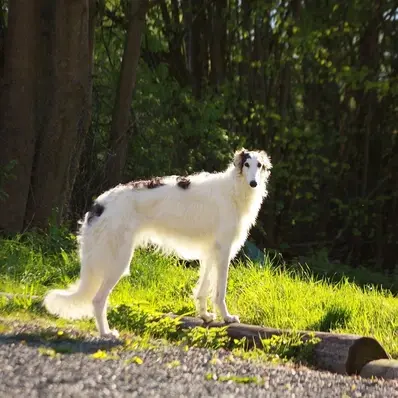







 Russian Bearhounds- Source:
Russian Bearhounds- Source:  Owtchar – Source:
Owtchar – Source:  Arabian Greyhound- Source:
Arabian Greyhound- Source: 

 White Borzoi with Brown markings- Source:
White Borzoi with Brown markings- Source:  Fawn Borzoi – Source:
Fawn Borzoi – Source:  Black and White Borzoi- Source:
Black and White Borzoi- Source:  White Borzoi- Source:
White Borzoi- Source: 
 Mae West and her Borzois- Source:
Mae West and her Borzois- Source: 

